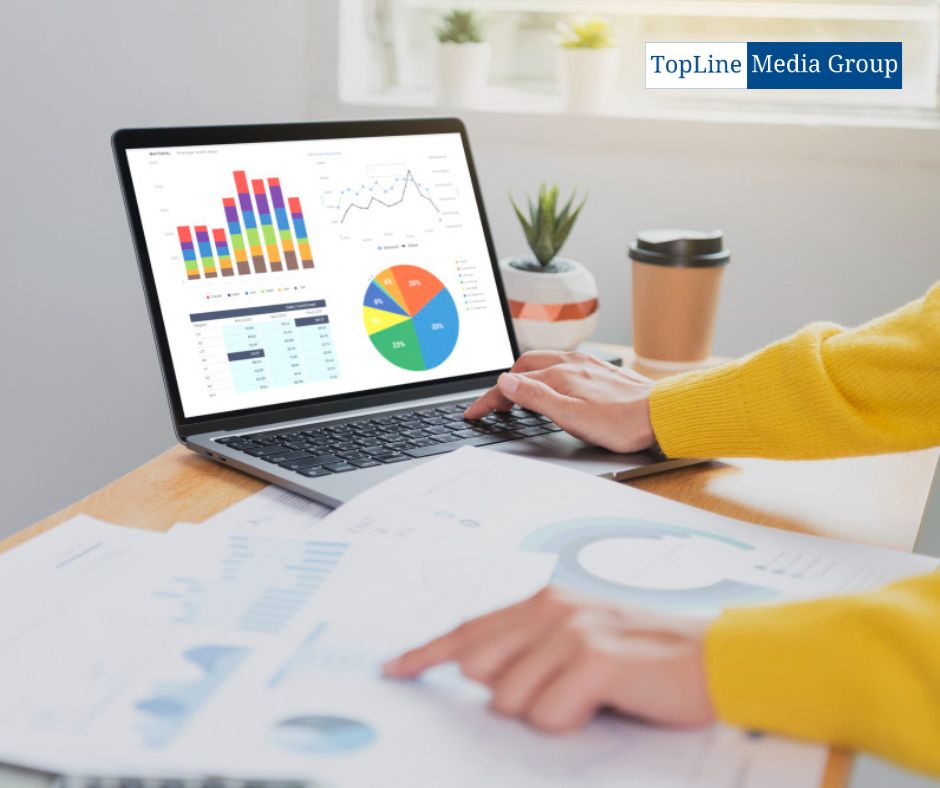In the dynamic world of social media marketing, analyzing performance and gaining insights is crucial for businesses to make informed decisions and optimize their strategies. Social media analytics tools provide valuable data and metrics that enable companies to track their performance, understand audience behavior, and measure the effectiveness of their marketing efforts. In this comprehensive guide, we’ll delve into the importance of social media analytics, explore various analytics tools available, and provide actionable insights for leveraging data to improve social media performance.
The Importance of Social Media Analytics
Measuring Performance
Social media analytics allow businesses to measure the performance of their social media activities by tracking key metrics such as engagement, reach, impressions, clicks, and conversions. By analyzing these metrics, businesses can assess the effectiveness of their content, campaigns, and overall social media strategy.
Understanding Audience Behavior
Social media analytics provide insights into audience behavior, preferences, and demographics. By analyzing data such as demographics, interests, and engagement patterns, businesses can better understand their audience and tailor their content and messaging to meet their needs and interests.
Informing Decision-Making
Data-driven insights from social media analytics empower businesses to make informed decisions about their social media strategy, content creation, advertising budget allocation, and audience targeting. By identifying trends, opportunities, and areas for improvement, businesses can optimize their efforts and maximize their return on investment (ROI).
Exploring Social Media Analytics Tools
Facebook Insights
Facebook Insights is a built-in analytics tool that provides valuable data about a Facebook Page’s performance. It offers insights into metrics such as page likes, post reach, engagement, and audience demographics. Businesses can use Facebook Insights to track the performance of their posts, understand their audience, and optimize their content strategy.
Twitter Analytics
Twitter Analytics offers insights into a Twitter account’s performance, including metrics such as tweet impressions, engagement rate, follower growth, and audience demographics. Businesses can use Twitter Analytics to track the performance of their tweets, monitor audience engagement, and identify popular topics and trends.
Instagram Insights
Instagram Insights provides data and metrics about an Instagram account’s performance, including post reach, impressions, engagement, and audience demographics. Businesses can use Instagram Insights to track the performance of their posts, stories, and IGTV videos, understand their audience, and optimize their content strategy.
LinkedIn Analytics
LinkedIn Analytics offers insights into a LinkedIn Page’s performance, including metrics such as post impressions, engagement, follower demographics, and website visits. Businesses can use LinkedIn Analytics to track the performance of their posts, measure audience engagement, and evaluate the effectiveness of their LinkedIn marketing efforts.
Social Media Management Platforms
Social media management platforms such as Hootsuite, Buffer, and Sprout Social offer comprehensive analytics features that allow businesses to track performance across multiple social media platforms from a centralized dashboard. These platforms provide insights into metrics such as engagement, reach, follower growth, and audience demographics, enabling businesses to monitor performance, schedule posts, and analyze data effectively.
Actionable Insights for Improving Social Media Performance

Identify Top Performing Content
Use social media analytics to identify top-performing content, including posts with high engagement, reach, and click-through rates. Analyze the characteristics of these posts, such as content type, format, timing, and messaging, to inform future content creation and optimization strategies.
Understand Audience Preferences
Analyze audience demographics, interests, and engagement patterns to gain insights into audience preferences and behavior. Use this data to tailor your content, messaging, and targeting strategies to better resonate with your audience and drive engagement.
Monitor Competitor Performance
Track competitor performance using social media analytics tools to gain insights into their content strategy, engagement levels, and audience demographics. Based on competitor analysis, identify gaps, opportunities, and areas for improvement in your own strategy.
Test and Iterate
Experiment with different content formats, messaging strategies, and posting schedules to test what resonates best with your audience. Use social media analytics to track the performance of these experiments and iterate your plan based on data-driven insights.
Set Clear Goals and KPIs
Establish clear goals and key performance indicators (KPIs) for your social media efforts, such as increasing engagement, driving website traffic, or generating leads. Use social media analytics to track progress toward these goals and adjust your strategy as needed to achieve desired outcomes.
Utilize Advanced Metrics for Deeper Insights
In addition to basic metrics like engagement and reach, explore advanced analytics features offered by social media platforms and management tools. These may include metrics like sentiment analysis, audience sentiment, click-through attribution, and conversion tracking. By diving deeper into these metrics, businesses can gain valuable insights into audience sentiment, content effectiveness, and the impact of social media on their bottom line.
Implement A/B Testing for Continuous Optimization
A/B testing, also known as split testing, involves comparing two versions of a piece of content or a marketing strategy to determine which performs better. Use A/B testing in your social media marketing efforts to test different variables such as headlines, visuals, call-to-action buttons, or posting times. By systematically testing and analyzing different elements, businesses can identify what resonates best with their audience and continuously optimize their social media strategy for better results.
Leverage Cross-Platform Insights for Holistic Analysis
While it’s essential to analyze performance on individual social media platforms, pay attention to the importance of cross-platform insights. Look for patterns, trends, and correlations across different platforms to gain a holistic understanding of your audience’s behavior and preferences. Cross-platform analysis can reveal valuable insights into audience overlap, content resonance, and the effectiveness of your overall social media marketing strategy, enabling you to make more informed decisions and allocate resources strategically.
Conclusion
Social media analytics tools play a vital role in evaluating performance, gaining insights, and optimizing social media marketing efforts. By leveraging data-driven insights from tools such as Facebook Insights, Twitter Analytics, Instagram Insights, LinkedIn Analytics, and social media management platforms, businesses can track performance, understand audience behavior, and make informed decisions to improve their social media presence and achieve their marketing objectives.
FAQs
What are advanced metrics, and why are they important in social media analytics?
Advanced metrics refer to more complex data points beyond basic metrics like engagement and reach. These may include sentiment analysis, audience sentiment, click-through attribution, and conversion tracking. Advanced metrics provide deeper insights into audience behavior, content effectiveness, and the impact of social media efforts on business objectives.
How can businesses effectively utilize A/B testing in their social media marketing strategy?
A/B testing, also known as split testing, involves comparing two versions of a piece of content or marketing strategy to determine which performs better. Businesses can use A/B testing to test different variables such as headlines, visuals, call-to-action buttons, or posting times. By systematically testing and analyzing different elements, businesses can identify what resonates best with their audience and continuously optimize their social media strategy for better results.
What are the benefits of leveraging cross-platform insights in social media analytics?
Cross-platform insights involve analyzing performance across multiple social media platforms to gain a holistic understanding of audience behavior and preferences. By looking for patterns, trends, and correlations across different platforms, businesses can identify audience overlap, content resonance, and the effectiveness of their overall social media marketing strategy. This enables companies to make more informed decisions and allocate resources strategically for maximum impact.
How can businesses measure the ROI of their social media marketing efforts?
Measuring the return on investment (ROI) of social media marketing efforts involves tracking critical metrics related to business objectives, such as leads generated, conversions, sales, or website traffic. Businesses can use social media analytics tools to attribute conversions and track customer journeys from social media channels to conversion points. By analyzing these metrics, companies can assess the effectiveness of their social media efforts in driving tangible business outcomes.
What are some common challenges businesses face in social media analytics, and how can they overcome them?
Common challenges in social media analytics include data overload, interpreting complex metrics, and connecting social media efforts to business goals. Businesses can overcome these challenges by setting clear objectives, focusing on relevant metrics, using analytics tools with robust reporting capabilities, and integrating social media data with other business systems for a comprehensive view of performance. Additionally, ongoing education and training can help businesses stay updated on the latest trends and best practices in social media analytics.
What role does social media analytics play in influencer marketing campaigns?
Social media analytics are essential in influencer marketing campaigns for tracking the performance and impact of influencer collaborations. Businesses can use analytics to measure the reach, engagement, and effectiveness of influencer-generated content, as well as the ROI of influencer partnerships. By analyzing these metrics, businesses can assess the success of their influencer marketing efforts and make data-driven decisions for future collaborations.
How can businesses use social media analytics to improve customer service and satisfaction?
Social media analytics provide valuable insights into customer feedback, sentiment, and inquiries on social media platforms. By monitoring and analyzing social media conversations, businesses can identify common issues, address customer concerns promptly, and improve their overall customer service experience. Additionally, analytics data can help companies to identify trends and patterns in customer feedback, enabling them to address potential issues and enhance customer satisfaction proactively.




